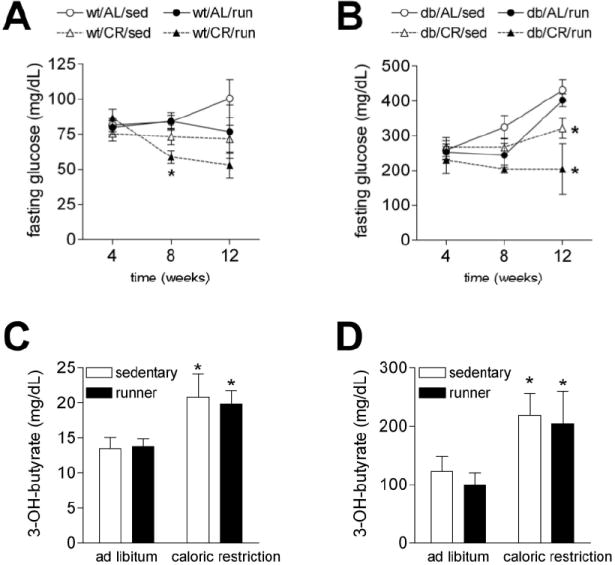Figure 3. Effects of energy deficit induced by caloric restriction alone or in combination with running wheel activity on serum glucose and 3-hydroxybutyrate concentrations.

(A) Fasting glucose measurements were made every four weeks throughout the experiment. Wild type runners on caloric restriction exhibit reduced fasting glucose levels during the eighth week of the experiment. (B) db/db mice were hyperglycemic (relative to wild type animals), even at the earliest time point. However, caloric restriction attenuated fasting hyperglycemia in these animals. (C) Serum ketone body (3-hydroxybutyrate) concentrations were elevated by caloric restriction in both sedentary and running wild type mice. (D) Although serum 3-hydroxybutyrate levels were elevated in sedentary db/db mice fed ad libitum, the db/db mice retain the capacity for caloric restriction-induced enhancement of serum ketone concentrations. Asterisk (*) indicates significance at p<0.05 following 2-way repeated measures ANOVA (A and B) or 2-way ANOVA (C and D).
